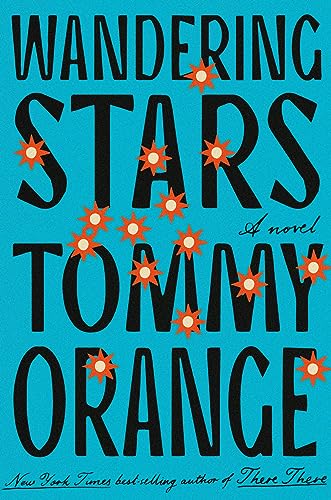Tommy Orange’s latest book, Wandering Stars, is both a prequel and a sequel to his Pulitzer Prize finalist, There There. Wandering Stars was recently longlisted for the Booker Prize, and seeing that news reminded me I needed to check this book out. If you read There There, you know that Orange adapts narrative structures with more success than a reader might expect. Wandering Stars takes this distinctive world-building further—it’s more of a world rebuilding after a world destruction. It’s heartbreaking and breathtaking at the same time.
Orange is an enrolled member of the Cheyenne and Arapaho tribes of Oklahoma. He lives in Oakland, California, and the Bay Area is often featured in his writing. I’m going to quote the publisher for a quick synopsis that I can’t improve upon: “Wandering Stars is a novel about epigenetic and generational trauma that traces the legacies of the Sand Creek Massacre of 1864 and the Carlisle Indian Industrial School through three generations of a family.”
You don’t need to know the violent colonial history, already, to understand the story. Orange fills in enough detail for the most unacquainted reader to understand the context, and still relates the history in a poetically short (yet relevantly detailed) way. He does this so effectively that a reader, who might be previously familiar with facts about boarding schools and massacres, will somehow get a freshly horrible perspective on the history, and what it means for the characters’ lives and relationships.
I enjoy how Orange creates his characters on the page, and how they exist within context of each other. Even when a character can’t face sharing their pain with others, or face sharing the pain (or happiness, or acceptance) of others, they find they can’t escape this demanding, rewarding intersection of other identities. People are important to other people, and it’s a dynamic, fluctuating, frustrating, and wonderful thing.
I remember telling someone that I had listened to the audiobook of There There, and that person wondered how well the audiobook could work, considering the multiple narrator technique Orange used in the book. It had worked very well, I assured them—my only disappointment with the CD-format audiobook was that the last disc only had a couple of tracks on it, total–so that when I put the last disc into my car stereo, I only had a few moments of story left, when I expecting a whole disc’s worth of tracks. I appreciate finally having more of the story—from before, from after, from the stars on down.
Orange, T. (2024). Wandering stars (First edition). Alfred A. Knopf.


